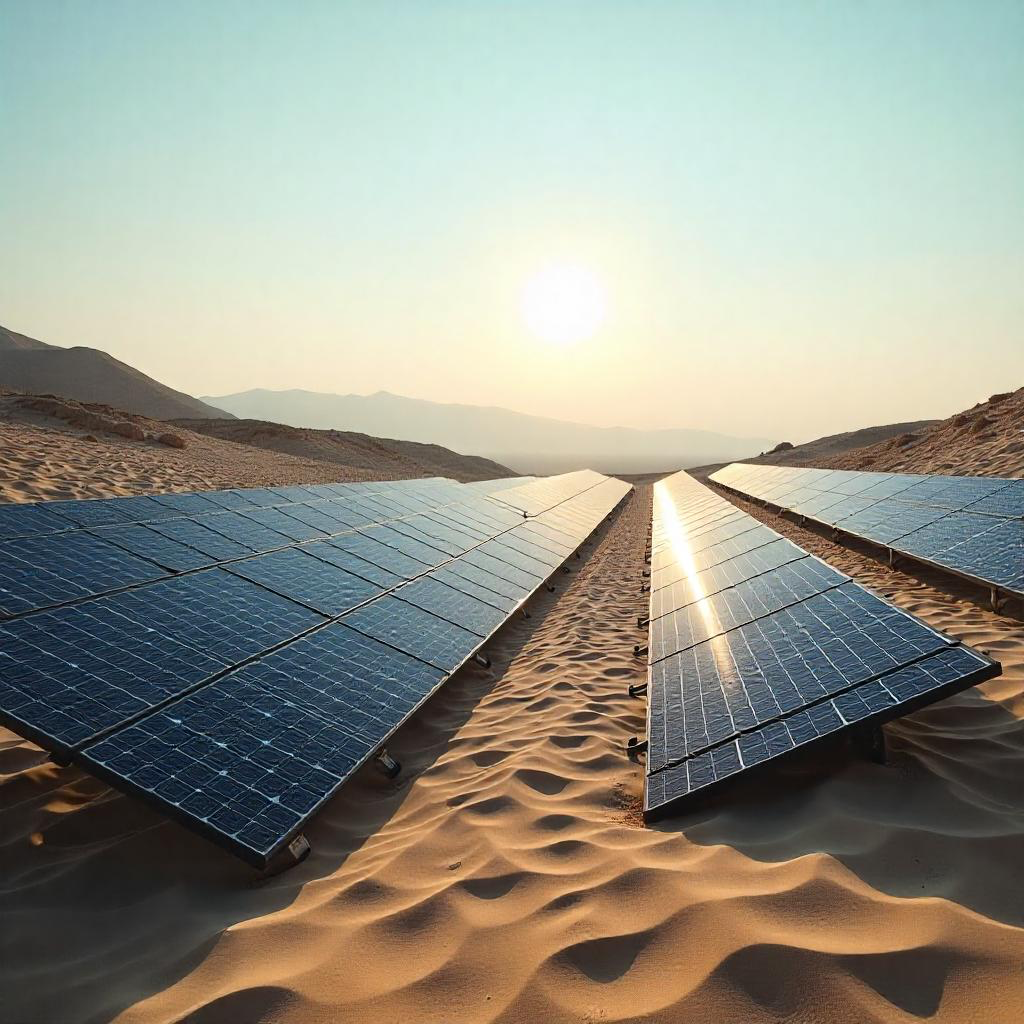The Future of Solar Energy in Oman – Trends and Insights

The Future of Solar Energy in Oman – Trends and Insights
Oman, a nation traditionally reliant on its vast hydrocarbon reserves, stands at the cusp of a profound energy transformation. Driven by ambitious national visions and a global imperative for climate action, the Sultanate is increasingly pivoting towards renewable energy sources, with solar power emerging as the undeniable cornerstone of its future energy landscape. Blessed with abundant sunshine hours and expansive unutilized land, Oman possesses an exceptional natural endowment for solar energy generation. This shift is not merely an environmental undertaking but a strategic move towards economic diversification, enhanced energy security, and sustainable development. Understanding the trends and insights shaping this transition is crucial to grasping Oman’s pathway to a greener, more resilient energy future.
Oman’s Solar Potential: A Natural Advantage
The geographical position of Oman, spanning diverse arid and semi-arid regions, provides it with some of the highest solar irradiance levels globally. Averaging over 3,000 sunshine hours annually, with daily solar insolation ranging from 5.5 to 6.5 kilowatt-hours per square meter, the country is a natural powerhouse for solar photovoltaic (PV) generation. This inherent advantage significantly reduces the payback period for solar investments and enhances the efficiency of PV systems. Furthermore, Oman boasts vast tracts of sparsely populated land, particularly in the interior, which are ideal for the development of large-scale solar farms without significant environmental or social displacement. This combination of high solar resource availability and ample land offers a compelling proposition for accelerating solar deployment and meeting future energy demands.
Key Drivers and Strategic Policies
Oman’s commitment to renewable energy is enshrined within its national strategies, most notably Oman Vision 2040. This forward-looking blueprint emphasizes economic diversification, sustainability, and technological advancement, with renewable energy playing a pivotal role. The National Energy Strategy aims for renewables to contribute at least 30% of the country’s electricity generation by 2030, a significant leap from current levels. To achieve this, the Omani government has established a supportive regulatory framework, led by entities like Nama Group, Oman Power and Water Procurement Company (OPWP), and Tanweer (Rural Areas Electricity Company). These bodies are instrumental in planning, procuring, and developing renewable energy projects. Incentives such as competitive tendering processes, long-term power purchase agreements (PPAs), and the exploration of net-metering schemes for distributed generation are further stimulating investment and adoption. The success of landmark projects like the 500 MW Ibri II Solar PV Project, which commenced commercial operations ahead of schedule, serves as a testament to Oman’s effective execution capabilities and commitment to scaling up solar capacity. Further projects, such as Manah I and Manah II, with a combined capacity of 1,000 MW, are underway, solidifying the utility-scale solar pipeline.
Emerging Trends in Oman’s Solar Landscape
1. Escalation of Utility-Scale Solar Projects
The trend towards mega-solar farms will continue to dominate Oman’s renewable energy trajectory. These large-scale projects are crucial for meeting national energy targets and providing stable, significant contributions to the grid. The government’s strategic focus on competitive tenders ensures cost-efficiency and attracts international developers, fostering a robust market.
2. Growth in Distributed Generation and Rooftop Solar
While utility-scale projects lead, there is a burgeoning interest in distributed generation, particularly rooftop solar for residential, commercial, and industrial consumers. This segment offers energy independence, reduces transmission losses, and empowers consumers. As regulations evolve and the costs of solar energy solutions become more attractive, we anticipate a surge in localized installations. Companies that provide comprehensive services, from consultation to installation and maintenance, will play a vital role in enabling this decentralized energy revolution.
3. Integration of Energy Storage Solutions
The intermittent nature of solar power necessitates robust energy storage solutions, primarily large-scale battery energy storage systems (BESS). Oman is increasingly exploring the integration of BESS with solar farms to enhance grid stability, improve reliability, and optimize dispatchability. This trend is critical for ensuring a seamless transition to higher penetrations of renewable energy.
4. Green Hydrogen Production Ambitions
Perhaps the most transformative trend is Oman’s ambitious pivot towards becoming a global hub for green hydrogen production. Leveraging its abundant solar resources for electrolysis, Oman aims to produce hydrogen using clean electricity, positioning itself as a key exporter of this future fuel. Projects like the mammoth Green Energy Oman (GEO) initiative, which plans to produce millions of tonnes of green hydrogen and ammonia annually, underscore the nation’s vision to capitalize on its renewable endowments for a new energy economy. This strategic direction not only diversifies Oman’s energy export portfolio but also aligns it with global decarbonization efforts.
5. Technological Advancements and Smart Grid Integration
Continuous innovation in PV technology, including advancements in panel efficiency, bifacial modules, and floating solar (floatovoltaics) in suitable locations, will further enhance solar’s viability. Concurrently, the development of smart grid technologies and advanced energy management systems is crucial for efficiently integrating variable renewable energy sources into the national grid. These technologies enable better forecasting, demand-side management, and real-time optimization, contributing to a more resilient and responsive energy infrastructure. The expertise provided by firms like easytechno in deploying advanced energy solutions will be invaluable in this digital transformation.
Challenges and Opportunities
Despite the immense potential, Oman faces challenges. These include the need for significant grid infrastructure upgrades to accommodate higher renewable penetration, managing the intermittency of solar power, optimizing water usage for panel cleaning in arid environments, and ensuring adequate financing for the ambitious pipeline of projects. Public awareness and fostering local participation are also key to broad-based adoption.
However, the opportunities far outweigh the challenges. The solar sector can be a powerful engine for economic diversification, creating new industries and high-skilled jobs in manufacturing, installation, maintenance, and research and development. It enhances Oman’s energy security by reducing reliance on fossil fuel imports for power generation and hedges against volatile global energy prices. Environmentally, it significantly lowers carbon emissions, contributing to global climate goals and improving air quality. Furthermore, the green hydrogen initiative presents a monumental opportunity for Oman to establish itself as a leader in a nascent, high-growth global industry, leveraging its sustainable energy development to create new export revenues.
Conclusion
The future of solar energy in Oman is undeniably bright, marked by a confluence of natural advantages, strong government commitment, and ambitious strategic initiatives. The Sultanate is not merely adopting solar power but is meticulously integrating it into its long-term vision for economic growth and environmental stewardship. From large-scale utility projects powering cities to distributed solutions enabling energy independence for businesses and homes, and the groundbreaking pursuit of green hydrogen, Oman is demonstrating a holistic approach to its energy transition. As global energy demands shift and the imperative for sustainability intensifies, Oman is poised to emerge not just as a regional leader in solar energy but as a significant global player in the new energy economy, setting a compelling example for nations worldwide.
